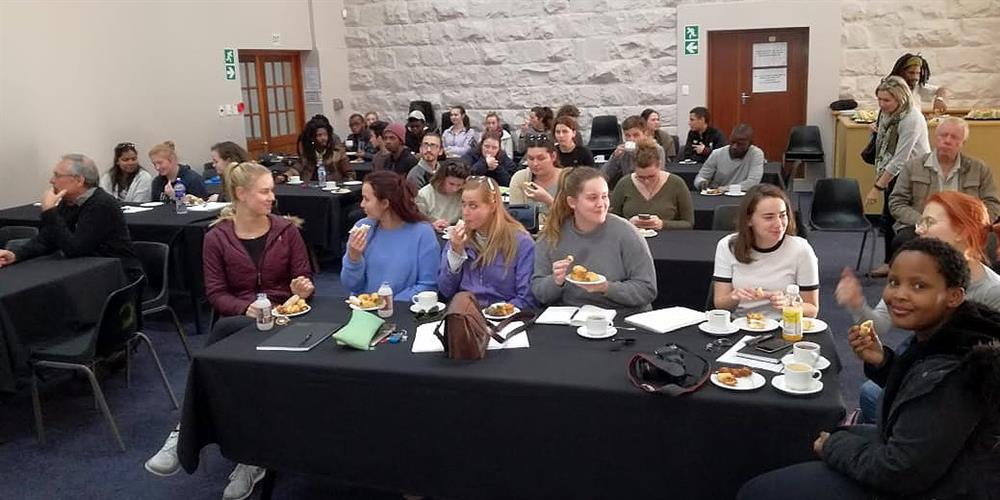MOSSEL BAY NEWS - Mossel Bay's Pinnacle Point Caves, where evidence was found of occupation by middle stone age people (between 170 000 and 40 000 years ago), was the focus of a number of second year architecture students of the Nelson Mandela University (NMU) Port Elizabeth who are visiting Mossel Bay this week.
The students have been tasked with developing concept architectural plans for the interpretive centre that will be built at the old quarry next to the St Blaize cave, and have a mere 12 weeks to do so. They have to present four different designs, one of which will have to ensure that the proposed centre is as environmentally friendly as possible.
It is nevertheless hoped that work on a temporary exhibition centre will commence before the end of the year. This is intended to be a state-of-the-art showcase for the archaeological discoveries for which Mossel Bay's coastline has become world renowned and will be replaced by the permanent interpretive centre when World Heritage status is attained for the Pinnacle Point caves.
The non-profit company Point Discovery Centre NPC, which was founded to initiate the ultimate Point Discovery Interpretive Centre, welcomed the students and emphasised that their involvement stems from a soundly established relationship with the university.
An existing and exciting multi-faceted exhibition on the Pinnacle Point cave discoveries, developed by the NMU, is on its way to Mossel Bay and will be one of the first to be showcased at the temporary exhibition centre towards the end of this year.
Heritage sites
The archaeological sites at Pinnacle Point, which have revealed some of the earliest evidence for modern human behaviour, have been declared a provincial heritage site. Pinnacle Point will be put forward for national heritage site status before application may be made to have it declared a World Heritage Site.
Dr Peter Nilssen, one of the scientists who discovered the archaeological site, told the students that the remains first came to light during an environmental impact study of a portion of land that would later be developed as the Pinnacle Point Beach and Golf Resort.
The 1997 survey by Nilssen and Dr Jonathan Kaplan revealed a number of stone age sites and evidence that humans had inhabited the caves in the cliffs below the present-day Pinnacle Point clubhouse for tens of thousands of years. Professor Curtis Marean of the Arizona State University and his team of archaeologists excavated the area and found what is regarded as the earliest evidence in the world so far of the systematic exploitation of marine resources and symbolic human behaviour. Marean began researching the Pinnacle Point Caves in 2000, and announced the initial results of the SACP4 Project in a paper which he co-authored with Nilssen and ten others.
 The students also had time for informal discussions and presentations on the importance of the archaeological discoveries for which Mossel Bay's coastline has become world renowned.
The students also had time for informal discussions and presentations on the importance of the archaeological discoveries for which Mossel Bay's coastline has become world renowned.
Attraction
The Pinnacle Point Caves are already drawing visits from scientists, students and volunteers and will continue to attract a growing number of students. It has been made accessible to the public through archeologist-led tours offered by Point of Human Origins.
"The proposed interpretive centre will showcase and provide a modern, interactive display of what is being found in the area. Mossel Bay may soon rank alongside places like the Cradle of Humankind and Olduvai Gorge as one of Africa's most sought-after evo-tourism destinations," the students were told by Point Discovery Centre NPC director, Harry Hill.
The students' visit included a field trip to Cave 13B at Pinnacle Point under the guidance of Nilssen. They also visited the old stone quarry site at the Point, which the municipality has identified as the location for the proposed interpretive centre which is deemed necessary for achieving World Heritage status.
Such centres are built to display artefacts and offer interactive presentations on the sites concerned.
'We bring you the latest Mossel Bay, Garden Route news'















